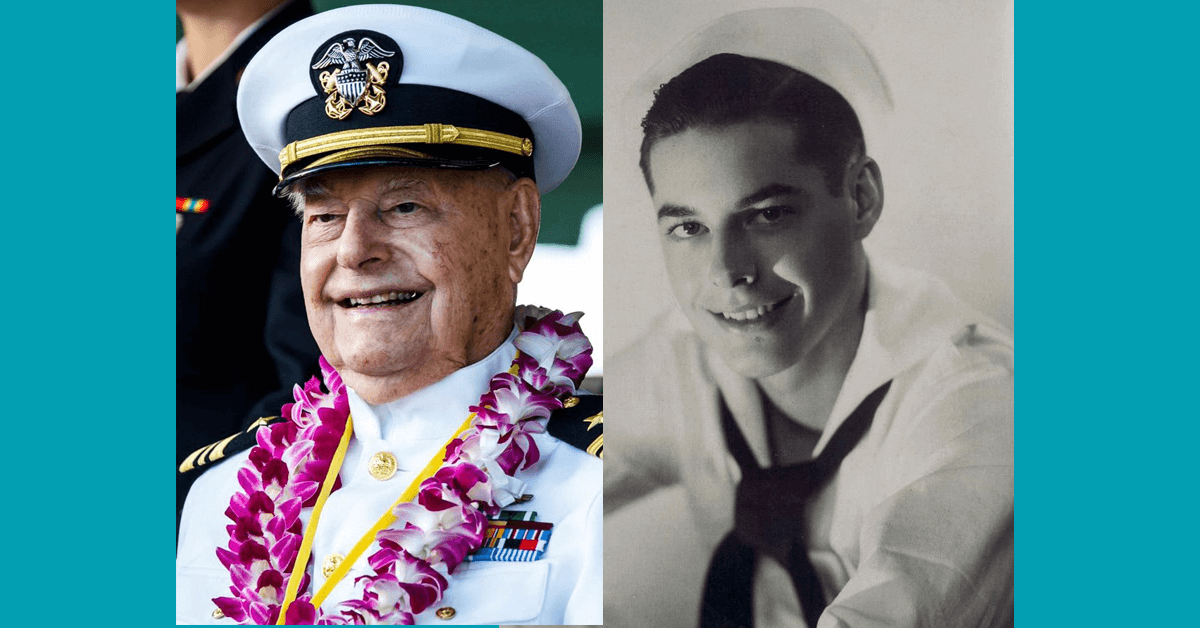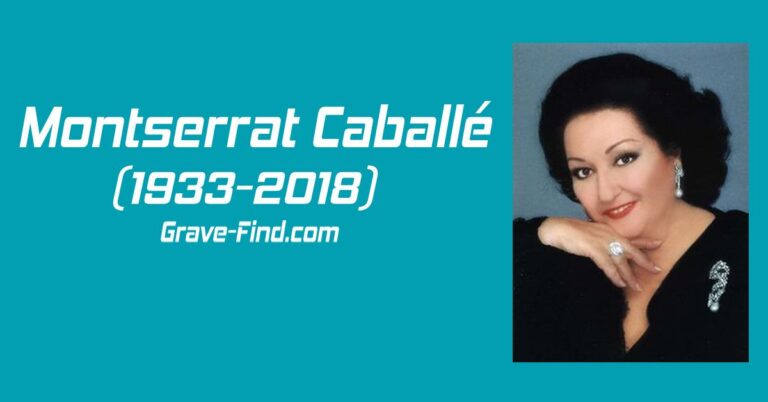Lou Conter (1921-2024) American Naval Officer
Lou Conter (1921-2024) American Naval Officer, Lou Conter Find a Grave Memorial, Lou Conter was an U.S. Military Figure. He died in Grass Valley, California, on 1 April 2024 at the age of 102.
He was the last surviving veteran from the loss of the Battleship Arizona which was sunk during the surprise attack on the Pacific Fleet anchored at Pearl Harbor. The pivotal event catapulted the United States into the Second World War. Born in rural Wisconsin, he enlisted in the United States Navy shortly after his eighteenth birthday. Following completion of his basic training in San Diego, California, he was assigned to the U.S. Naval Station at Pearl Harbor on the island of Oahu.
|
Lou Conter
|
|
|---|---|
| Birth name | Louis Anthony Conter |
| Born | 13 September 1921 Ojibwa, Wisconsin, U.S. |
| Died | 1 April 2024 (aged 102) Grass Valley, California, U.S. |
| Burial |
Saint Patrick Catholic Cemetery
Grass Valley, Nevada County, California, USA
|
| Allegiance | United States |
| Service/ |
United States Navy |
| Years of service | 1939–1967 |
| Rank | Lieutenant commander |
| Unit | USS Arizona (BB-39) USS Bon Homme Richard (CV-31) |
| Battles/wars |
Korean War |
On December 7, 1941, Quartermaster Conter found himself stationed on watch at the stern of the Pennsylvania Class Battleship Arizona (BB-39). Shortly before 8:00 a.m. he, along with his shipmates, heard the first whines of the incoming Japanese “Zeros” as they made their initial approach on Pearl Harbor’s “Battleship Row.” Racing to his battle station, Conter arrived at the ship’s quarterdeck just aft of the main mast and forward of main turret number three. At approximately 8:09 a.m. a Japanese warplane dropped a large armor piercing round which plunged into the Arizona’s forward deck, slicing through five levels of steel and wood before detonating a magazine.
The resulting explosion shattered the vessel, lifting the bow nearly 40 feet out of the harbor. The blast threw Conter forward onto the quarterdeck where he soon found himself fighting the rapidly rising waters as they claimed the broken ship. He assisted a number of his injured ship mates and helped prevent many from jumping from the ship’s deck into the flaming waters below. The commanding officer sounded the order to abandon ship, and Conter, now knee deep in the waters of the Pacific, found his way to a lifeboat and began the arduous task of rowing to shore. During his flight from the stricken Arizona, he and several other sailors managed to pull several dozen injured men from the water. Shortly before 10:00 a.m., the Japanese strike force withdrew and Conter found himself assisting in the grim task of pulling the dead from the water and fighting the numerous fires which engulfed the naval station.
Following the entrance of the United States into the Second World War, he enlisted in the Naval Flight School before serving in both major theatres of the war. As a pilot in the Pacific Campaign, he was shot down on two separate occasions, being forced to survive in the shark infested waters off of New Guinea. Pulled from the waters, he continued flying a number of combat missions during the duration of the conflict.
During the Korean War, he served as an intelligence officer and worked in special operations, helping establish the inaugural Naval SERE School. The school trains personnel who face the possibility of capture by hostile forces the skills needed for survival, evasion, resistance, and escape.
In 1967, Conter retired with the rank of Lieutenant Commander after twenty-eight years of service. Though retired from active service, he, like countless other survivors of the “Day of Infamy” continued to make the annual pilgrimage to Pearl Harbor to honor the 2,403 souls lost that day, 1,177 of which came from the U.S.S. Arizona.
Early life
Louis Anthony Conter was born in Ojibwa, Wisconsin, on September 13, 1921, to Nicholas Anthony Conter and Lottie Esther Milligan. Conter had one older and one younger sister. He and his family moved from Wisconsin to New Mexico in 1922, before moving again to Denver, Colorado, in 1924. Conter moved to Stockton, Kansas, in 1927 before returning to Denver in 1930, where he lived on a farm. Upon finishing school, Conter began working at the same company as his father.
Military career
Conter enlisted in the US Navy on November 15, 1939, in his home town of Denver, and completed basic training in San Diego, California. He boarded the USS Arizona on January 24, 1940, as a quartermaster.
Pearl Harbor
USS Arizona returned to her base at Pearl Harbor on December 6, 1941. On the morning of December 7, Conter was on watch on the quarterdeck station between the third turret and main deck, when the ship was attacked by a squadron of Japanese torpedo planes and bombers at 8 am. About five minutes later, Arizona was struck by a 1,760-pound (800 kg) bomb between the first and second turret, which ignited the ship’s ammunition magazine. The following explosion blew off the ship’s bow and lifted the battleship out of the water, knocking over Conter while killing and injuring many others. As the ship burned and started to sink, she was hit by more Japanese projectiles. Meanwhile, Conter was aiding wounded fellow sailors, keeping them from jumping in the burning oil covering the water’s surface. When Conter was already knee deep in water, the captain gave the order to abandon ship and Conter took to the lifeboats. Arizona sank in nine minutes, taking the lives of 1,177 of her crew. Her 334 surviving crew struggled to escape the burning ruins, of which Conter saved several by pulling them out of the water into his lifeboat before rowing to shore. Following the attack, Conter spent several weeks helping to put out fires and recovering the bodies of the fallen.
World War II
Following the entry of the United States into World War II as a direct result of the Attack on Pearl Harbor, Conter was selected for and entered naval flight training as a naval aviation cadet (NAVCAD). He qualified as an enlisted naval aviation pilot (NAP) in November 1942, participating in several nighttime bombing raids flying a PBY-5 variant, the Consolidated PBY Catalina with Patrol Squadron Eleven (VP-11), then known as Black Cats, in the South Pacific.[7] He was shot down twice over the Pacific during his Navy flying career, but managed to use a raft to row to shore on both occasions. Later commissioned as an ensign, Conter went on to serve in the New Guinea campaign and in the European theater at the end of the war. During this time, he reached the rank of lieutenant and was a recipient of the Distinguished Flying Cross and the Navy Commendation Medal with Combat “V” device.
Post World War II
Following the end of the war, Conter returned to California where he had completed his basic training back in 1939, and joined the Naval Reserve. Recalled to active duty during the Cold War, Conter saw action again during the Korean War in the 1950s, serving on the aircraft carrier USS Bon Homme Richard. Conter decided to remain on active duty and eventually retired from the Navy in December 1967, having achieved the rank of lieutenant commander.
Later life
After his retirement from the Navy, Conter pursued a career as a real estate developer in California. Conter published a book about his life titled The Lou Conter Story in 2021; he turned 100 the same year. Conter was also a member of the Knights of Columbus. Following the death of Ken Potts in April 2023, Conter became the last known survivor of the sinking of the USS Arizona. He died in Grass Valley, California, on April 1, 2024, at the age of 102.






